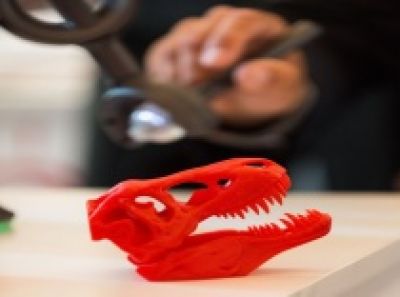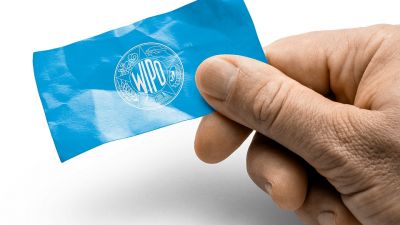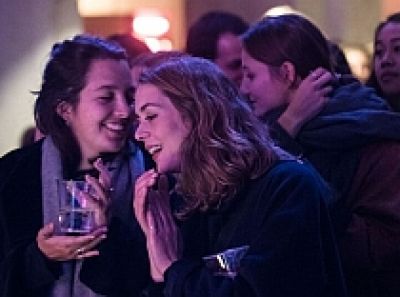“At Kampus Hybernská we are offering all Charles University faculties and components a common space to meet each other as well as city partners or others in the application sphere,” says Marcel Kraus, project manager of Hyb4City since January of this year. As a space, the “campus” is inspirational, linking – as it says on its website – the academic world with creativity and art. Anyone who has ever visited the site will agree: the opportunities the space affords are many.
When you meet the project manager, Kraus looks so familiar you’ll find yourself wondering where you saw him before. Originally, he was both a musician and actor (maybe you saw him on stage at some point). Today, he is driven by innovation, and describes his job on LinkedIn as “Innovation Ecosystem Designer”.
Kampus Hybernská more than qualifies as such an ecosystem thanks to Kraus’s co-efforts on the Hyb4City university project, which laid the foundation for cooperation last year signed by Rector Tomáš Zima and Prague Mayor Zdeněk Hřib late last year. As a result, two entities – the city and CU’s registered institute Campus Hybernská – took up residence on site.
“The good news is that Hyb4City's team is complete. It counts about 10 full-time staff as well as part-time students,” Kraus explains. He took the helm in January when he came to Charles University after more than eight years at the Technology Agency of the Czech Republic (TA ČR), where he was devoted to promoting applied research in the social sciences and humanities and arts. Kraus is an expert on interdisciplinary cooperation, which forms the cornerstone of his approach.
“Since its founding, the campus has seemed a very suitable place for academic, cultural and other events. And then came an offer from the Centre for the Transfer of Knowledge and Technology CU (CPPT) — and I thought that in the context of the Éta and Zéta programmes at TA ČR, it was the right time to change venues. Moreover, I see a link between the campus and my experience in these programmes, in supporting the emerging research generation. I'd say that the activities we're going into on the new campus are mostly very similar, but they have slightly different ‘scenery’, different ‘costumes’ and different options,” explains.
The campus: Both a neutral and welcoming space
Kraus sees potential in connecting socio-humanities know-how with technology, with the natural sciences or medicine. It is the only way, he says, to respond to the complex challenges of the moment. “This can be done if we use all the potential there is at all of Charles University’s faculties. At Hybernská, we would like to offer a common space for all faculties and parts of CU, so that members of academia can meet with each other and with partners from the city or the application sphere in this territory," Kraus outlines plans plan to bring together colourful and innovative ideas, approaches and personalities on campus, similar to initiatives in “the West.”
Does he find inspiration from abroad? Without a doubt. “There are several such centres, but at the same time, each one is unique," says Kraus, who has experience in Germany and the country's "creative industries" or innovation ecosystems, having worked for one of the Fraunhofer Institutes in Leipzig from 2008 to 2013.
The original Kampus Hybernská was under the ‘umbrella’ of the Faculty of Arts but under CPPT now serves the entire university. There is a lot to follow on campus. There was a gallery, café and circular workshop at the campus before, in addition to countless cultural events and festivals. Now, research and innovation has been added to the mix as well.
Partners for a rich array of events
The City of Prague, both as the owner of the premises and a partner, has begun a gradual renovation of the site. “Assuming that the restrictive pandemic measures are not reintroduced, we are heading for full operation in the autumn,” Kraus hopes. The programme envisages scientific and cultural events, exhibitions, workshops, discussions with professionals and the general public, student activities, the presentation of research projects as well as a programme in English – in cooperation with embassies and foreigners conducting research in Prague.
 The campus will also offer support to student ideas already emerging within. The concept of Students’ Hybernska (a hub of student associations) works, as well as the Innovation Lab, which is already being run in its sixth run or inception headed by the enthusiastic lecturer Jan Veselý. Additional professionals from CPPT and Charles University Innovations Prague (CUIP), who monitor campus activities, offer possible assistance to new spin-offs and start-ups.
The campus will also offer support to student ideas already emerging within. The concept of Students’ Hybernska (a hub of student associations) works, as well as the Innovation Lab, which is already being run in its sixth run or inception headed by the enthusiastic lecturer Jan Veselý. Additional professionals from CPPT and Charles University Innovations Prague (CUIP), who monitor campus activities, offer possible assistance to new spin-offs and start-ups.
“We hope, more than ever, to reach English-speaking audiences. I have a fairly precise vision of where to go. We would like Kampus Hybernská to become an established centre of science, art, education and innovation, making a mark in the Central European sphere... Our vision is bold, but I believe that we, together with our partners in the newly established institute, will be able to fulfil it. Consider that the capital and the largest university in the country are coming together, not to mention this is Prague and Charles University, players of European or even global importance. This concept is a unique chance for both the university and Prague,” Kraus says.
| Marcel Kraus |
| Marcel Kraus has been Hyb4City project manager at Kampus Hybernská since January 2021. He studied music at the Prague Conservatory, at the University of West Bohemia in Pilsen (2010) and economics at Universität Leipzig (2012). He is very much at home in the German milieu: he worked at the Czech Embassy in Berlin, and also at one of the Fraunhofer Institutes in Leipzig, plus at the Grassi Museum. He was involved in “creative industries” (in Leipzig, Prague or London) and was based for more than eight years at the Technology Agency of the Czech Republic |




















